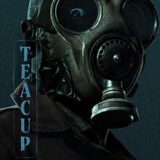 As a devotee (I hesitate to use the word “fan” as it seems too geeky in this context) of the work of J.G. Ballard, I was excited to read a study of his life and work. And you would be hard-pressed to find a more comprehensive academic discourse on the man’s life and work than “J.G. Ballard” by D. Harlan Wilson (University of Illinois Press).
As a devotee (I hesitate to use the word “fan” as it seems too geeky in this context) of the work of J.G. Ballard, I was excited to read a study of his life and work. And you would be hard-pressed to find a more comprehensive academic discourse on the man’s life and work than “J.G. Ballard” by D. Harlan Wilson (University of Illinois Press).
Wilson interweaves the biographical elements with rich and insightful analysis of Ballard’s oeuvre, from the novels to the short stories, plus commentary on his non-fiction work. The author makes the point that, while Ballard’s life informed his work (such as his captivity with his parents by the Japanese during World War II), the fiction is not Ballard’s way of understanding himself or dealing with any demons – there were positive aspects to his captivity, it seems, according to Wilson.
The popular idea is that “Empire of the Sun” (the Spielberg film that brought Ballard’s work to a wider audience) is an autobiography is false. It is, as Wilson explains, a fictionalised autobiography. And neither are the Ballardian protagonists in some of the novels purely autobiographical. They serve a purpose in the complex machinery of the author’s unique, mainly strange, often deeply obscure and incomprehensible books.
I found the section about his most experimental novel, “The Atrocity Exhibition”, both fascinating and reassuring. Reassuring, in that I felt I did not understand the novel at all when I read in in my early 20s and because Wilson affirms that it more or less defies explanation, though he is very clear about the themes therein. I still remember being completely hooked by the cut-up technique (also beloved of William Burroughs, though Ballard’s approach is very different). I came away from that chapter in this book feeling that it was okay not to understand completely, but also enriched by the author’s commentary on its themes, ideas and exposition.
I was pleased, too, that Wilson says favourable things about one of my favourite Ballard stories, “The Drowned Giant” – I’ve only read it once, and images from it have remained with me forty years on.
While the writing is academic, it is still accessible to us general readers, though there are of course plenty of words some of us (me) have to look up in the dictionary. Curiously, though, while the author is somewhat critical of pure academics who use obtuse language, this is something Wilson is guilty of himself at times, even with words that he has clearly made up to try to clarify his meaning. If I were nitpicking, Wilson also carps about some other commentators (sour grapes in some cases, I felt) and his language slips into slang now and again. For example, he describes the conservationist, Barbara Rafferty in “Rushing to Paradise” as a “Kurtzian psycho”; not “psychopath” or mentally ill, but a “psycho”, which would now be seen as a judgemental label if it were being applied to a real person today. Equally, though, the author may be being deliberately provocative, and some of this volume is certainly that in places.
For all of JG’s difficult, often experimental and certainly unconventional works, I agree with Wilson that he is certainly one of the greatest novelists of the 20th century.
I admire Wilson’s encyclopaedic knowledge of JG’s work, his laser inquisitiveness, his deeply fascinating and insightful commentary on more or less everything the man wrote. Often, for example, when he writes about Ballard’s love of the surrealists and how the imagery informs certainly the earlier works like “The Crystal World”, “The Drowned World” and so on, I wanted to cheer. As an art student at high school, the surrealists had Godlike status for me, so it makes sense that it was around the time I grew to love them that my interest in the work of JG. Ballard developed, along with becoming a regular reader of magazines like “New Worlds”, story collections such as “Dangerous Visions” (and later on, publications including “Interzone”) and works by all the “inner space” writers I could lay my hands on. I even tried my hand at some “inner space” writing myself, submitted an 8,000-word story to then editor Hilary Bailey and received a four-page, (handwritten on foolscap paper) critique from her, basically telling me to edit it down by 2,000 words. The magazine folded, while my revision was still under serious consideration. So it goes. But I always treasured that letter.
This book, then, is a paean, not only to JG Ballard, who was both a science fiction writer and not one, but also to the kind of writing that many of the writers I most admired worked with (though none of them really reached the heights of Ballard – either figuratively, as in his novel, “High Rise” – or literally, in terms of their writing, though many came extremely close).
This is a dense, at times brilliant, microscopically-detailed study that certainly requires a working knowledge of JG Ballard’s work. I can’t claim to have read everything, but certainly the key novels and stories are in my top twenty reads, and Wilson’s book has thrown a light on areas that may be shadowy or perplexing and is sure to enrich the flavour of anything you may have read, and will almost certainly lead you to read more.










